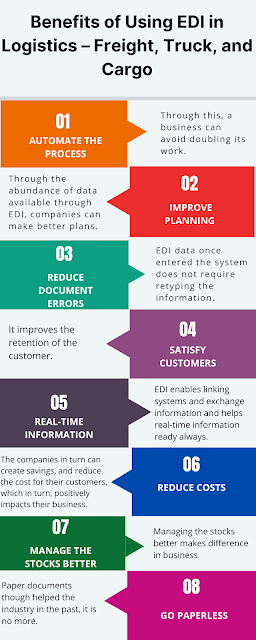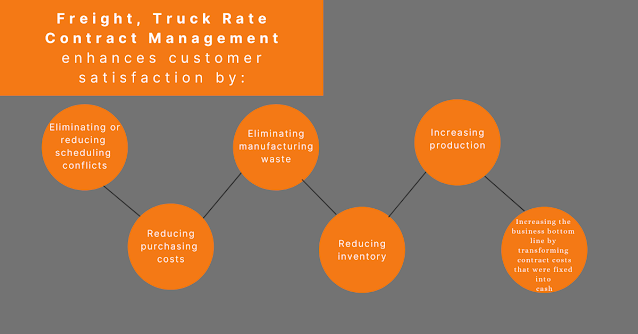 |
Benefits of Using EDI in Logistics – Freight, Truck, and Cargo |
EDI stands for Electronic Data Interchange. It is a means to communicate business documents intercompany in a standard format. In simple words, EDI alternates the paper-based documents like purchase orders and invoices.
Businesses around the world are active in transport and logistics in one way or the other. To manage their processes, businesses need to exchange their information. EDI is an effective technology to solve the issue.
How does EDI work in Logistics?
Logistics partners rely on EDI data to onboard a new trading partner, communicate with a customer, purchase orders, make an invoice, request for quotation, and get things done. Connecting and integrating the transport data across the supply chain is more important, which is assisted by EDI implementation.
EDI transactions need accuracy and standard to get processed. EDI data elements are formed by two or more data segments like sender ID and receiver ID. These segments give them meaning.
Benefits:
1. Automate the Process
EDI reduces human interventions and automates the processes. It can make error-free processes, deliver fast, and satisfy the partners. It can run 24/7 and document relevant data that need input into the distribution channel once. Through this, a business can avoid doubling its work.
2. Improve Planning
Through the abundance of data available through EDI, companies can make better plans. When inventory is out of place, they could order automatically and prevent last-minute hassles.
3. Reduce Document Errors
When paper documents can be replaced with electronic documents, the errors can be reduced. Individual paper documents are responsible for countless mistakes happening in the distribution channel. EDI data once entered the system does not require retyping the information.
4. Satisfy customers
EDI ensures faster delivery of inventories and goods through the truck, cargo, or freight, which benefits all kinds of businesses and customers alike. The Track-and-trace feature of EDI can reduce the stress of the customers by updating the real-time status of the transportation of the product. It improves the retention of the customer.
5. Real-time information
EDI enables linking systems and exchange information and helps real-time information ready always. Companies, without using EDI, need laborious efforts to compile the data and relevant information, which is also time-consuming. EDI makes it easy.
6. Reduce costs
The pool of logistics data from EDI helps the companies to make logical, faster, and better decisions, which affects their businesses. The companies in turn can create savings, and reduce the cost for their customers, which in turn, positively impacts their business.
7. Manage the stocks better
Managing the stocks better makes difference in business. Unnecessary large inventories or a shortage of inventories are all problematic. By using EDI, companies can predict the requirements of the stocks to meet their customer needs and can prevent unnecessary costs.
8. Go Paperless
Paper documents though helped the industry in the past, it is no more. Manual processing of paper documents is at risk of human errors, which is now taken care of by EDI.
When selecting a logistics partner, select a company using EDI to process information. This could enable you to make a better decision, save time, and use the data from anywhere in the world.

